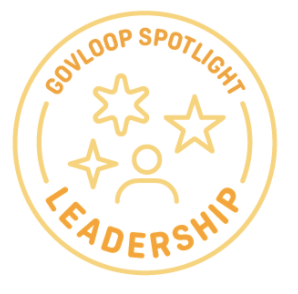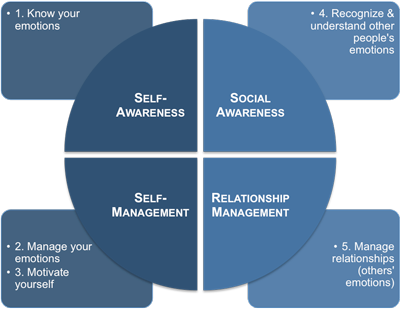What Is Emotional Intelligence?
 What exactly makes emotional intelligence a leadership superpower? Let’s first review its definition. Emotional intelligence (EI), the first “E” in the B.E.E.P skills model, means having the ability to recognize, understand and communicate your emotions effectively in situations with other people.
What exactly makes emotional intelligence a leadership superpower? Let’s first review its definition. Emotional intelligence (EI), the first “E” in the B.E.E.P skills model, means having the ability to recognize, understand and communicate your emotions effectively in situations with other people.
Dr. Daniel Goleman, researcher, subject matter expert and bestselling author, says that “emotional intelligence is a soft skill that can be cultivated.” Dr. Goleman also reminds us that the emotional brain responds to an event more quickly than the thinking brain. So, it’s vital that we focus on honing this competency, especially as we face life challenges and navigate an ever-changing global economy.
In his research, Goleman introduces his performance-based model of emotional intelligence through five domains, represented in a four-quadrant framework. Each quadrant and its function are categorized by personal and social competencies:
- Quadrant 1: Self-awareness means knowing and understanding your emotions, including your strengths and weaknesses.
- Quadrant 2: Self-management means controlling your emotions and having self-motivation.
- Quadrant 3: Social awareness means recognizing and understanding other people’s emotions; it includes being empathic and having organizational awareness.
- Quadrant 4: Relationship management means managing relationships and other people’s emotions.
Why EI?
Research shows that emotionally intelligent leaders are more effective, productive and self-confident. Emotionally intelligent leaders also promote trust and psychological safety for everyone in their workplace. With many employees physically returning to work or embracing a hybrid model, EI skills are all the more important for building an inclusive environment.
How to Cultivate It
The good news is that unlike one’s IQ (intelligence quotient), EQ (emotional intelligence quotient) can be improved over time with intention and effort. Following these key steps will make a difference.
Self-assessment: First, you must be aware of your own emotions and reactions to manage them effectively. One of the best ways to learn about yourself is to complete a self-assessment measure. A self-assessment measure like this one will give you feedback and insight about your current level of EQ, strengths and growth areas. You’ll also know what aspects to immediately focus on.
Awareness: Once you have an idea of your EQ, you’ll want to build self-awareness around your emotional reactions by paying closer attention to your thoughts and feelings. Mindfulness is a self-awareness practice you can do to build your level of emotional intelligence. When you feel an urge to react to something or someone or notice a shift in your mood during the workday, get curious about this sudden change. Take a moment to pause and ask yourself a few questions:
- What am I feeling right now?
- Where in my body am I experiencing that emotion?
- What am I telling myself about this situation?
- What thoughts or images were going through my mind?
- What was happening right before I started to feel this way? (Who, what, when and where?)
Mood tracking apps can also help you monitor your mood shifts throughout your workweek. Keeping tabs on your emotional reactions over time will give you data about your response tendencies so that you can plan your next response more mindfully.
Practice: To further build your EQ muscles you’ll need to put in the work to increase your emotional fitness. If you tend to react negatively under pressure, practicing emotional control will be critical to preserving your professional reputation and workplace relationships.
A simple exercise to practice self-control so that your emotions don’t get the best of you is to take a B.R.E.A.K:
B– Breathe in
R– Reflect on your experience
E– Embrace space (literally walk away)
A– Acknowledge your thoughts and feelings
K– Know your options (what is and isn’t within your control?)
Many people take the importance of understanding their emotional experiences for granted. Leaders must be self-aware and emotionally mature to fully meet the challenges that come with leading change and leading people. How effectively you respond to stressful work situations, deal with difficult people and manage diverse work environments is critical to your success as a 21st-century leader.
In part three of the B.E.E.P skills model, I will demystify what it means to exhibit “executive presence.”
Kima Tozay is a Licensed Clinical Social Worker and subject matter expert on Counseling and Advocacy programs in her role at Navy Fleet & Family Support Center, Everett, Washington. Her government career spans 15 years, starting in the Navy. Kima completed her Masters in Social Work degree from the University of Washington and has held positions with the Veterans Affairs Department (VA) and the Army. Kima’s greatest career accomplishment is receiving the Federal Employee of the Quarter Award for her leadership during the COVID-19 pandemic. She earned an Executive Leadership Certificate from Graduate School, USA. You can connect with Kima on LinkedIn.
Interested in becoming a Featured Contributor? Email topics you’re interested in covering for GovLoop to [email protected]. And to read more from our summer/fall 2021 Cohort, here is a full list of every Featured Contributor during this cohort and a link to their stories.
Photo credit: Tengyart on Unsplash







Leave a Reply
You must be logged in to post a comment.